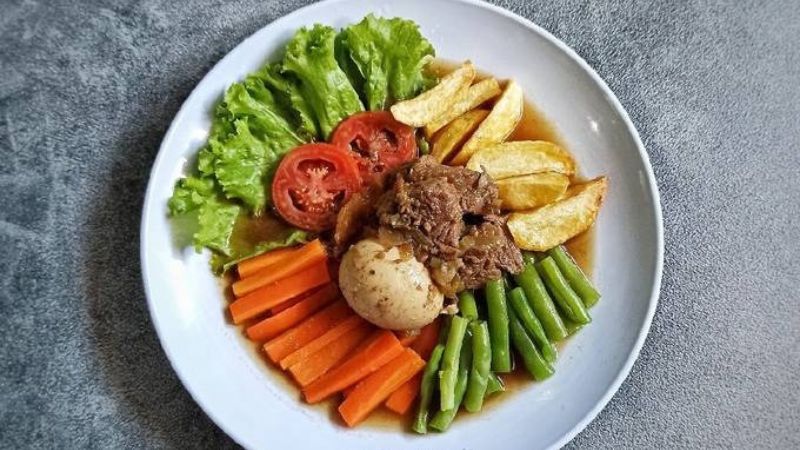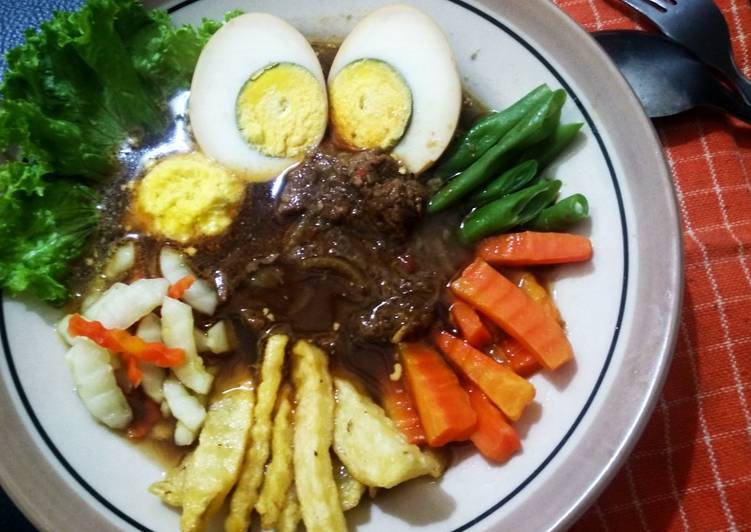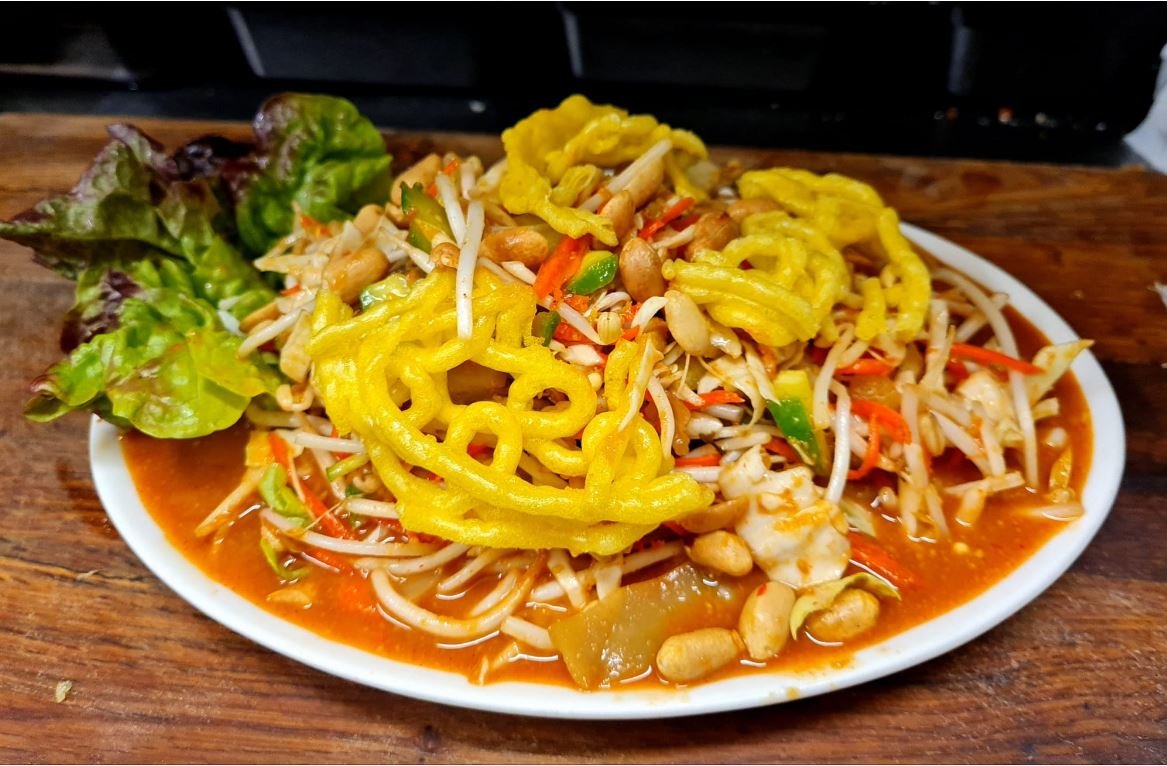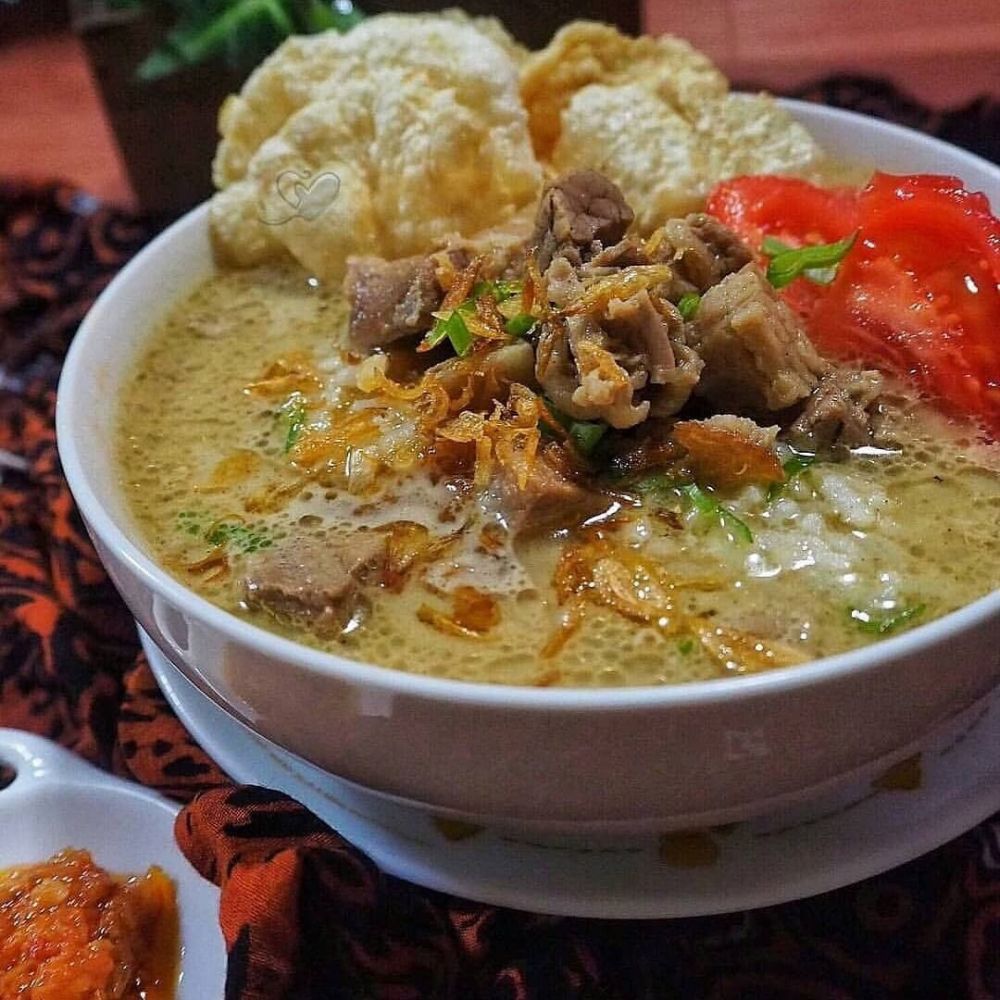
Selat Solo: The Javanese Salad That Tells a Story of a Kingdom
At first glance, it confounds the senses. Arranged artfully on a wide, flat plate is a vibrant tableau that looks distinctly European: crisp lettuce leaves, bright orange carrots, verdant green beans, slices of tomato, and golden-fried potatoes. At the center lies a tender piece of braised beef. Yet, one spoonful of the thin, dark, and glistening sauce that pools at the bottom instantly transports you from a European bistro to the heart of a Javanese royal court. This delightful paradox is Selat Solo, a dish that is not merely a meal, but a delicious, edible history lesson chronicling a fascinating chapter of cultural fusion in Indonesia.
The name itself is the first clue to its hybrid identity. "Selat" is the Javanese pronunciation of the Dutch word sla, meaning salad or lettuce. "Solo," of course, refers to its city of origin, Surakarta, a city renowned as a cradle of high Javanese culture, art, and tradition. So, it is, quite literally, the "Salad of Solo." But to call it a simple salad would be a profound understatement. It is a warm, savory, and complex main course that embodies the spirit of Indische Keuken, the celebrated Indo-Dutch fusion cuisine that blossomed during the Dutch colonial era.
A Symphony on a Plate: Deconstructing the Dish
To truly understand Selat Solo, one must appreciate its individual components, each playing a crucial role in the overall harmony of flavors and textures. The dish is a masterclass in composition, where every element is prepared with intention.

The undisputed star is the beef. Typically using a cut like sirloin or tenderloin, the meat is prepared in a style known as bistik Jawa (Javanese steak). It is slow-braised in a concoction of spices until it is fork-tender, absorbing a deep, savory flavor. Unlike a Western steak that is seared and served rare or medium, this beef is cooked through, its texture soft and yielding, designed to be easily eaten with a spoon and fork.
Surrounding the beef is the "salad" contingent. Fresh, crisp lettuce leaves form the bed, providing a cool, refreshing crunch that contrasts with the warm elements. Blanched or lightly steamed vegetables, such as carrots and green beans, are cut into neat batons, retaining their vibrant color and a slight bite. Slices of fresh tomato and cucumber add another layer of freshness and a hint of acidity. A hard-boiled egg, quartered or halved, is an almost mandatory inclusion, its creamy yolk offering a rich counterpoint to the tangy sauce.
No Selat Solo is complete without potatoes. They might appear as thick, hand-cut fried wedges, crispy on the outside and fluffy within, or sometimes as boiled potatoes that soak up the sauce beautifully. In some more elaborate versions, you might find a kroket (a Dutch-inspired potato croquette) or even a slice of galantine, a Javanese-style minced meatloaf, adding yet another layer of savory depth.
The Soul of the Selat: The Unforgettable Sauce
While the components are visually striking, it is the sauce that truly defines Selat Solo and anchors it firmly in the Javanese culinary landscape. This is where the magic of adaptation happens. A European would expect a thick, creamy gravy made from a roux of butter and flour. The Javanese, however, reimagined it completely.

The sauce for Selat Solo is a thin, almost translucent broth, dark and glossy from its primary ingredient: kecap manis, the ubiquitous Indonesian sweet soy sauce. It begins with a base of rich beef or chicken stock, which is then infused with a delicate balance of aromatics. Sautéed onions and garlic provide a savory foundation, while a whisper of nutmeg and a generous grind of black pepper lend a warm, earthy spice reminiscent of its European roots.
The genius lies in the final balancing act. To cut through the sweetness of the kecap manis and the richness of the broth, a souring agent is introduced. This is typically a splash of vinegar, or sometimes tamarind water, which provides a gentle, fruity tang. The result is a sauce that is simultaneously sweet, savory, tangy, and aromatic—a flavor profile known in Javanese as legit. It’s a light, refreshing liquid that drenches every component on the plate, unifying the disparate elements into a cohesive and utterly addictive whole.
A Culinary Crossroads: The History Behind the Dish
The story of Selat Solo is the story of Surakarta itself during the 18th and 19th centuries. As a powerful royal capital, the Kasunanan Palace of Surakarta was a center of political and cultural exchange with the Dutch colonialists. European officials, merchants, and their families introduced new ingredients and culinary techniques, including their fondness for beefsteak (biefstuk), salads, and potatoes.
The Javanese nobility, ever sophisticated and curious, did not simply adopt these foreign dishes. Instead, they engaged in a process of culinary diplomacy, reinterpreting these European concepts to suit the local palate. They took the idea of a steak and salad platter but transformed it with their own philosophy of flavor. The aggressive sear of a steak was replaced with the gentle, spice-infused braise. The thick, heavy gravy was lightened into a complex, broth-like sauce. And most importantly, the foundational Javanese flavor of sweetness, delivered by kecap manis, was woven into its very fabric.
In this way, Selat Solo became more than food; it was a symbol of cosmopolitanism and a testament to the creative genius of the palace kitchens. It was a dish that could be served to European guests as something familiar yet exotic, while remaining deeply satisfying to the Javanese themselves. It represents a gastronomic bridge between two vastly different cultures, built on a foundation of mutual curiosity and respect.
Finding the Authentic Taste
Today, Selat Solo remains one of Surakarta’s most iconic culinary treasures. To eat it in its hometown is to partake in a living tradition. The dish is served everywhere, from humble street-side warungs to more upscale, nostalgic restaurants.
One of the most legendary purveyors is Warung Selat Mbak Lies, a quirky, bustling eatery where the walls are covered with an eclectic collection of antiques and curiosities. Here, the dish is served with an unwavering commitment to the original recipe, a taste that has satisfied generations of locals and enchanted visitors. Another famous spot, Selat Vien’s, offers a slightly more modern and refined setting but with the same classic, soul-satisfying flavor.
To eat Selat Solo is to experience a dish that engages all the senses. The eyes feast on the colorful arrangement, the nose is tantalized by the sweet and spicy aroma of the sauce, and the palate is thrilled by the complex interplay of textures and tastes—the tender beef, the crisp vegetables, the soft potato, and the all-encompassing, unforgettable sauce.

In a world of fleeting food trends, Selat Solo stands as a proud monument to a bygone era. It is a dish born from encounter, refined by royalty, and embraced by the people. It proves that the most enduring and beloved foods are often those that tell a story—and the story of Selat Solo is one of creativity, adaptation, and the beautiful, delicious results of a meeting between East and West on a single, harmonious plate.


Selat Solo: The Javanese Salad That Tells a Story of a Kingdom pictures collections gallery
Selat Solo: The Javanese Salad That Tells a Story of a Kingdom is a nice pictures and stock photo for your computer desktop or your smartphone device (ipad, tablet, blackberry, iphone, and other device) and also for your personal use. Free available for desktop wallpaper or additional image collections for your all needs. And was uploaded by at date July 1, 2025. You can download it in your computer by clicking download button to save image... have nice day and have fun guys..
This 1 image in featured post from 0 Photos/images Gallery and awesome picture selections about Selat Solo: The Javanese Salad That Tells a Story of a Kingdom is available to download. "Download & Save" images/pictures/wallpapers now and this Is one of the post that listed in packed to Category is Foods directory, with image dimension/resolution size is 800 × 450 px and size image/picture file is 80 KB with original link post ID is : https://powae.pw/selat-solo-the-javanese-salad-that-tells-a-story-of-a-kingdom/. Get download/save images in post and gallery, "download" images or "preview" it on a bigger image for spesification sample in Large size (full attachment size) here : [Download & View to Large size]. Just Simple way, in thumbnail or in Gallery. *Click images to view Large Size.We collect this wonderful image from online and choose one of the best for you. Pictures collection that posted here was carefully chosen and published by author after choosing the ones which are best among the others. So, ultimately we make it and here these list of best image for your inspiration and informational reason regarding the Selat Solo: The Javanese Salad That Tells a Story of a Kingdom as part of blogsite exclusive updates collection. So, take your time and find the best informations and pictures posted here that suitable with your needs and use it for your own collection and personal use. About Image information: Image has been submitted and You are able to give your opinion as evaluations to our web site value.
Don't forget to comment if you interest with this images, you can share this post to social media like as facebook, twitter, google+, pinterest, stumbleupon, and more. just click social media buttons for share this post Selat Solo: The Javanese Salad That Tells a Story of a Kingdom Now. :)
Thanks for your visit, I hope you happy come to opo wae, wis opo wae, and get what you're looking for. And hope sometimes you will come back again here. All you need to do is help us develop by discussing this Selat Solo: The Javanese Salad That Tells a Story of a Kingdom if you like it "leave your comment". have fun, Thank you.




